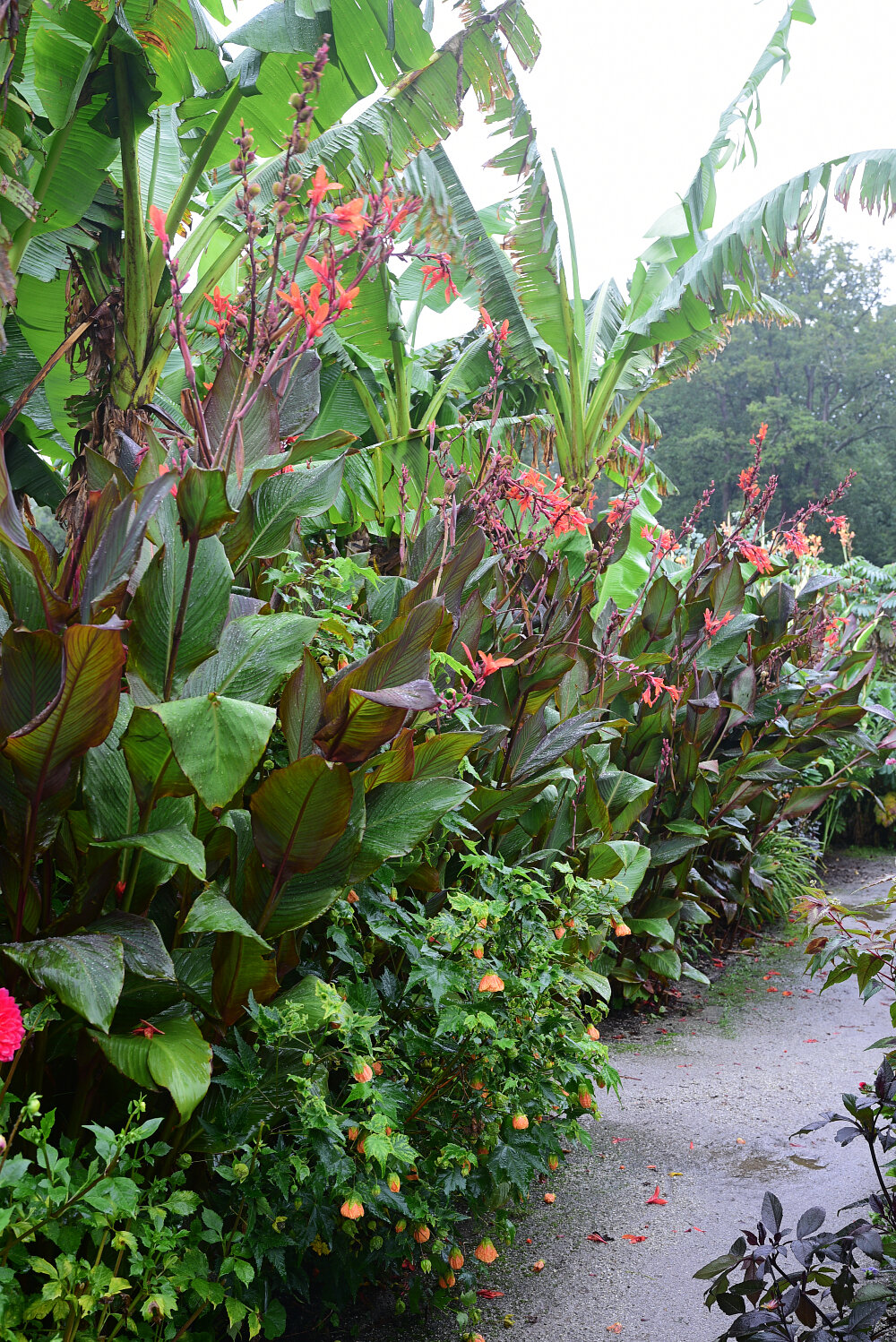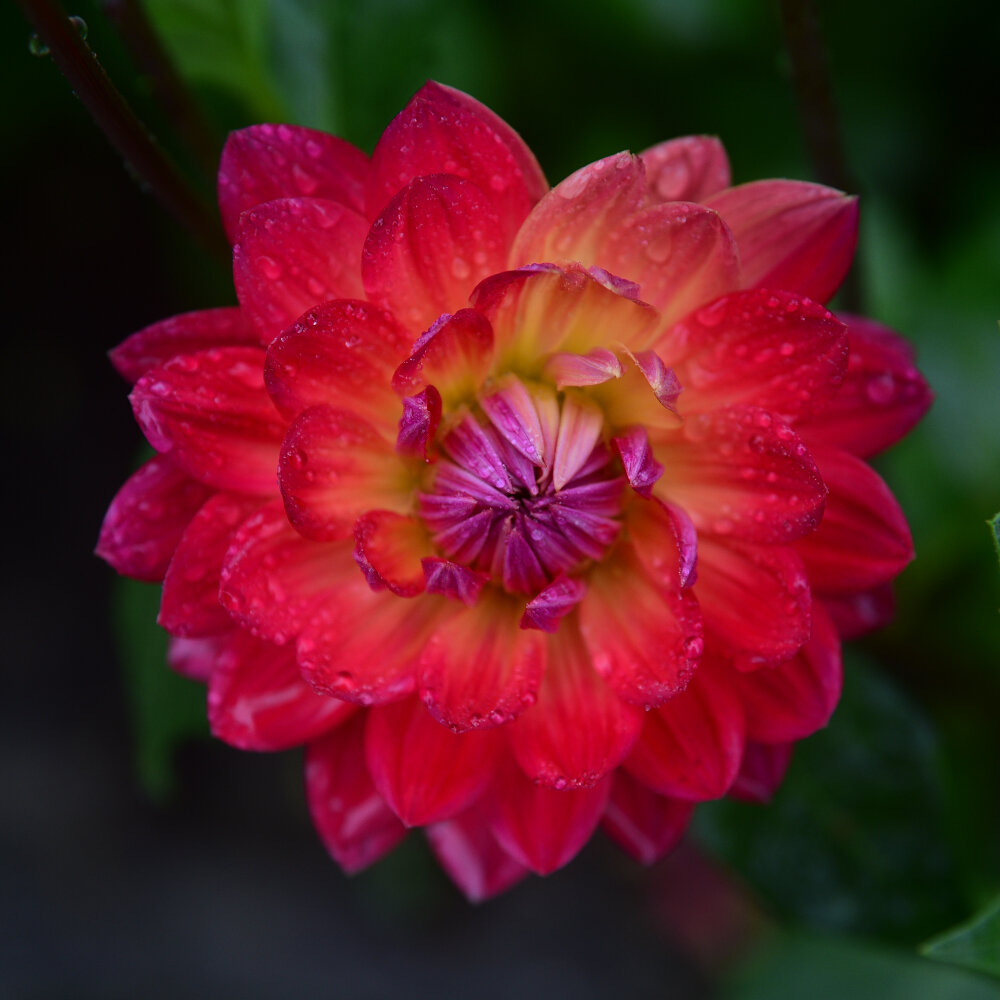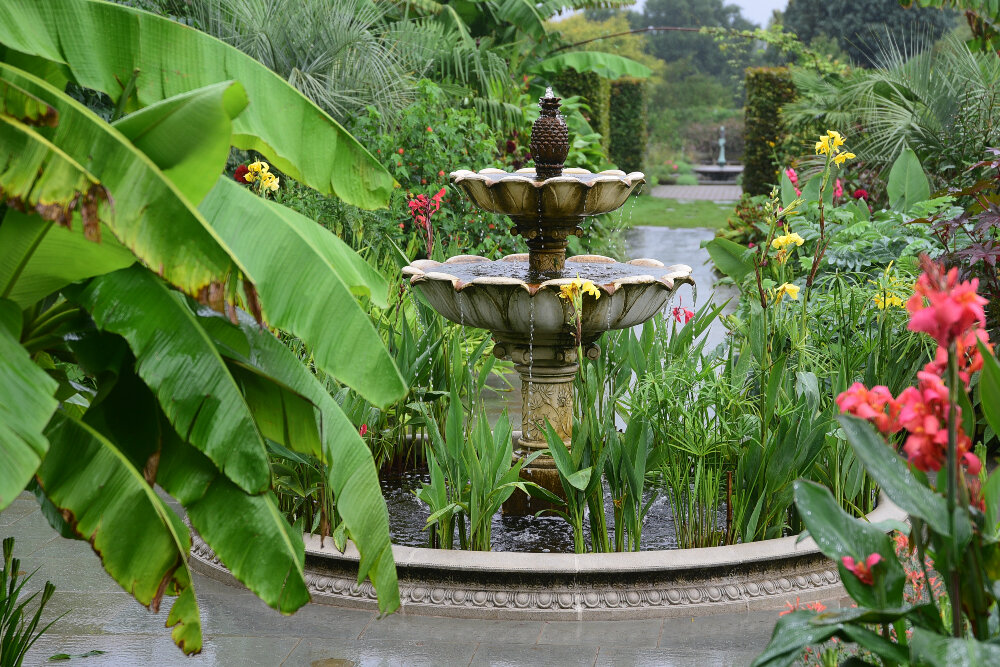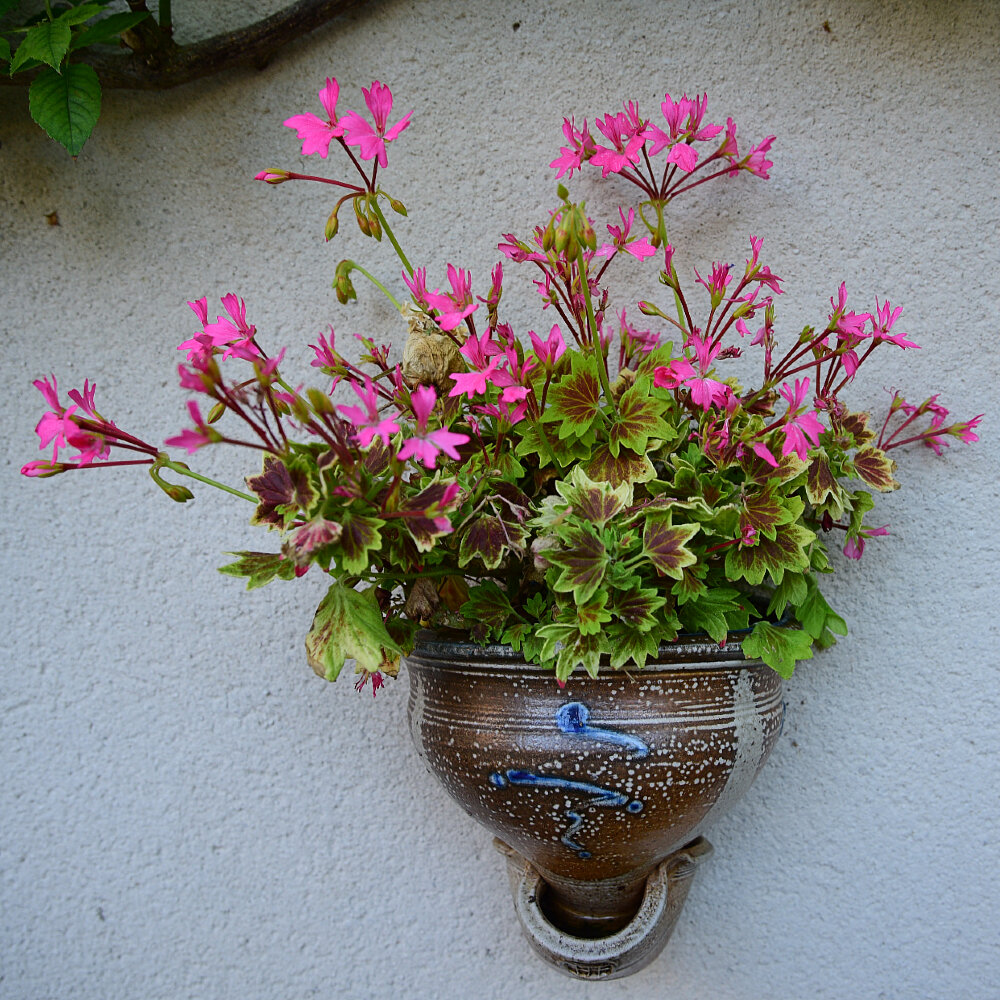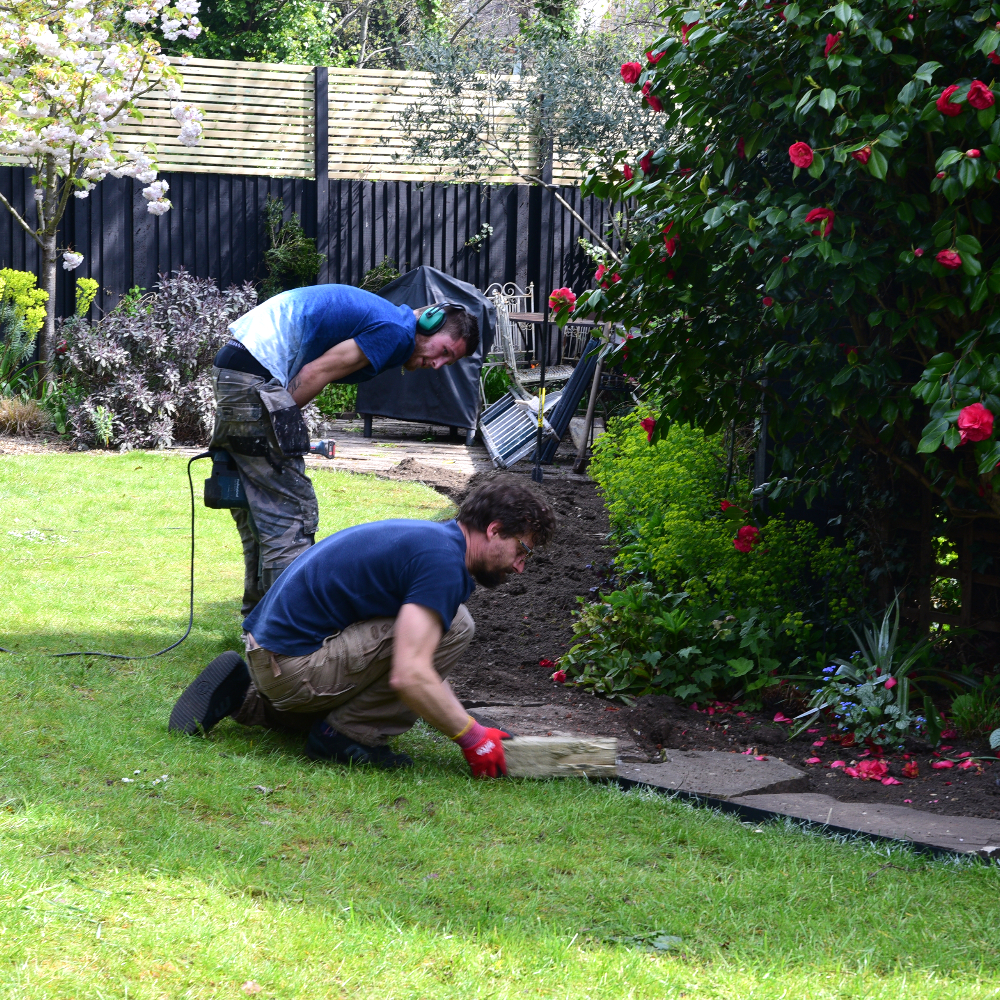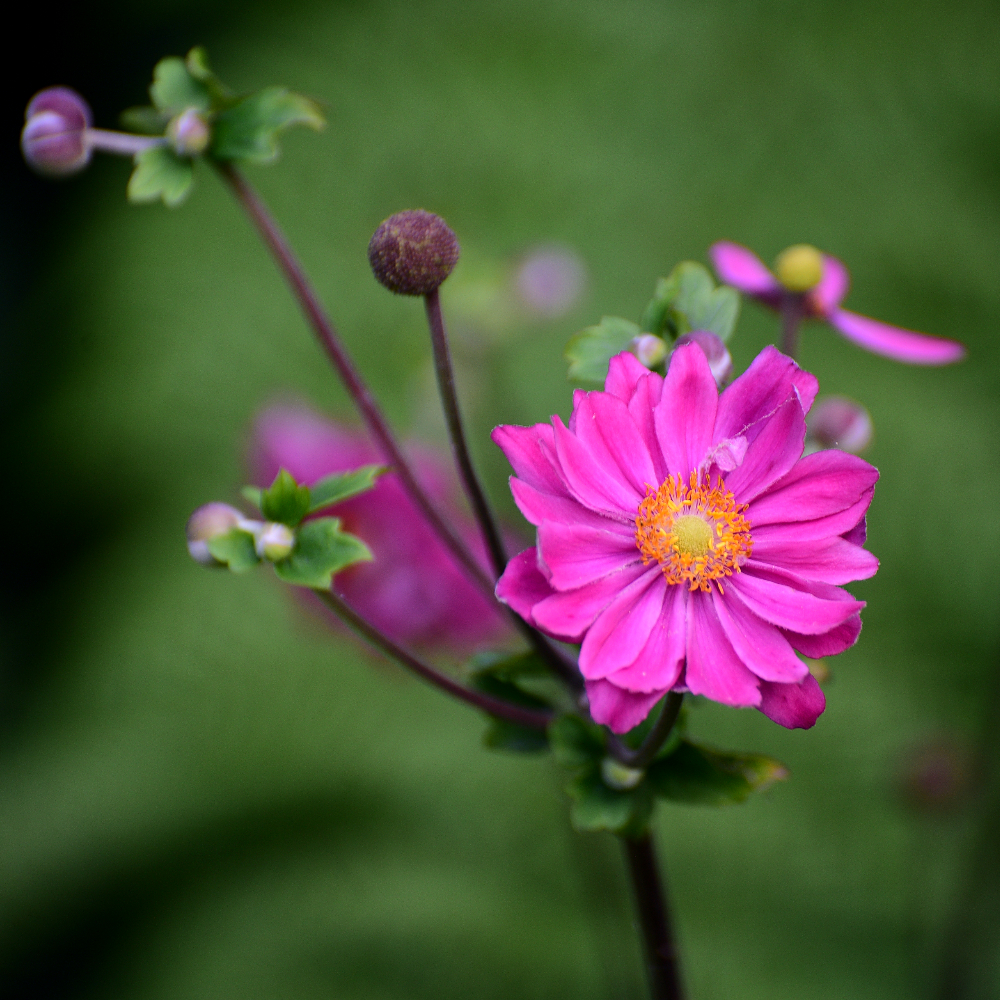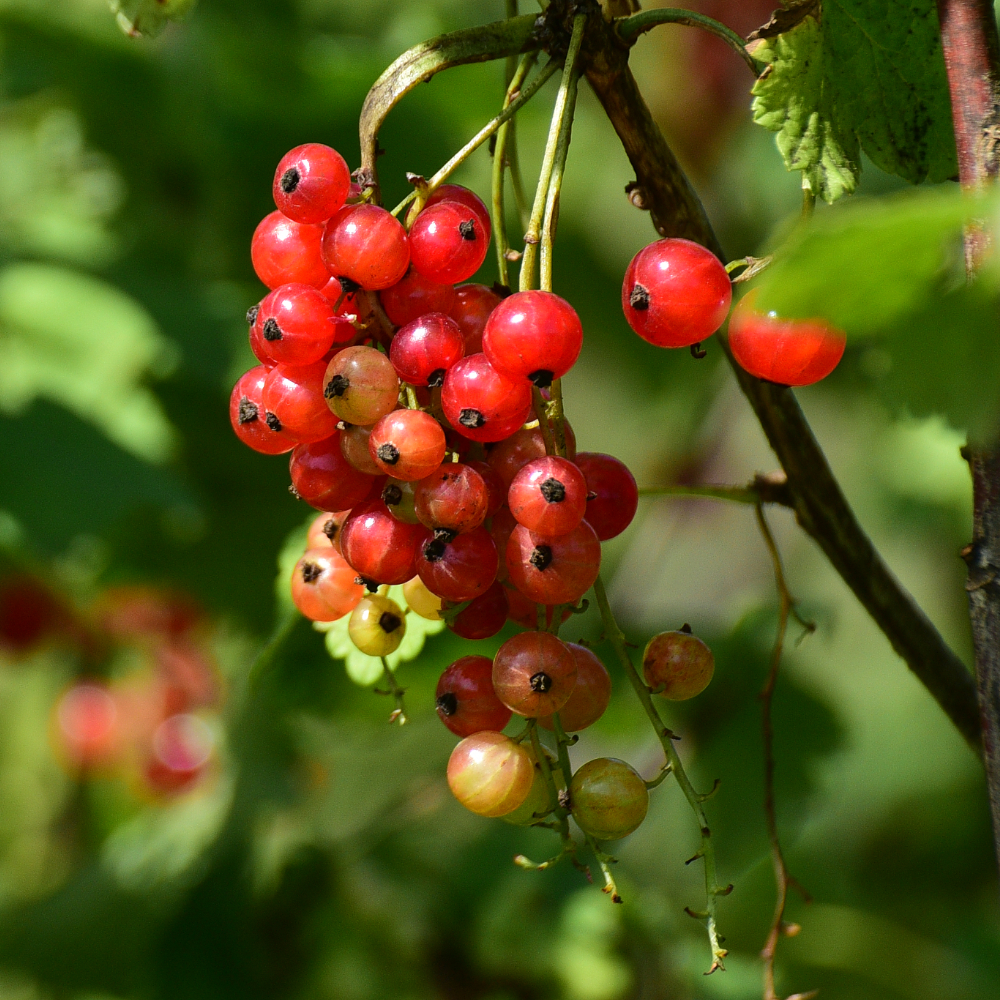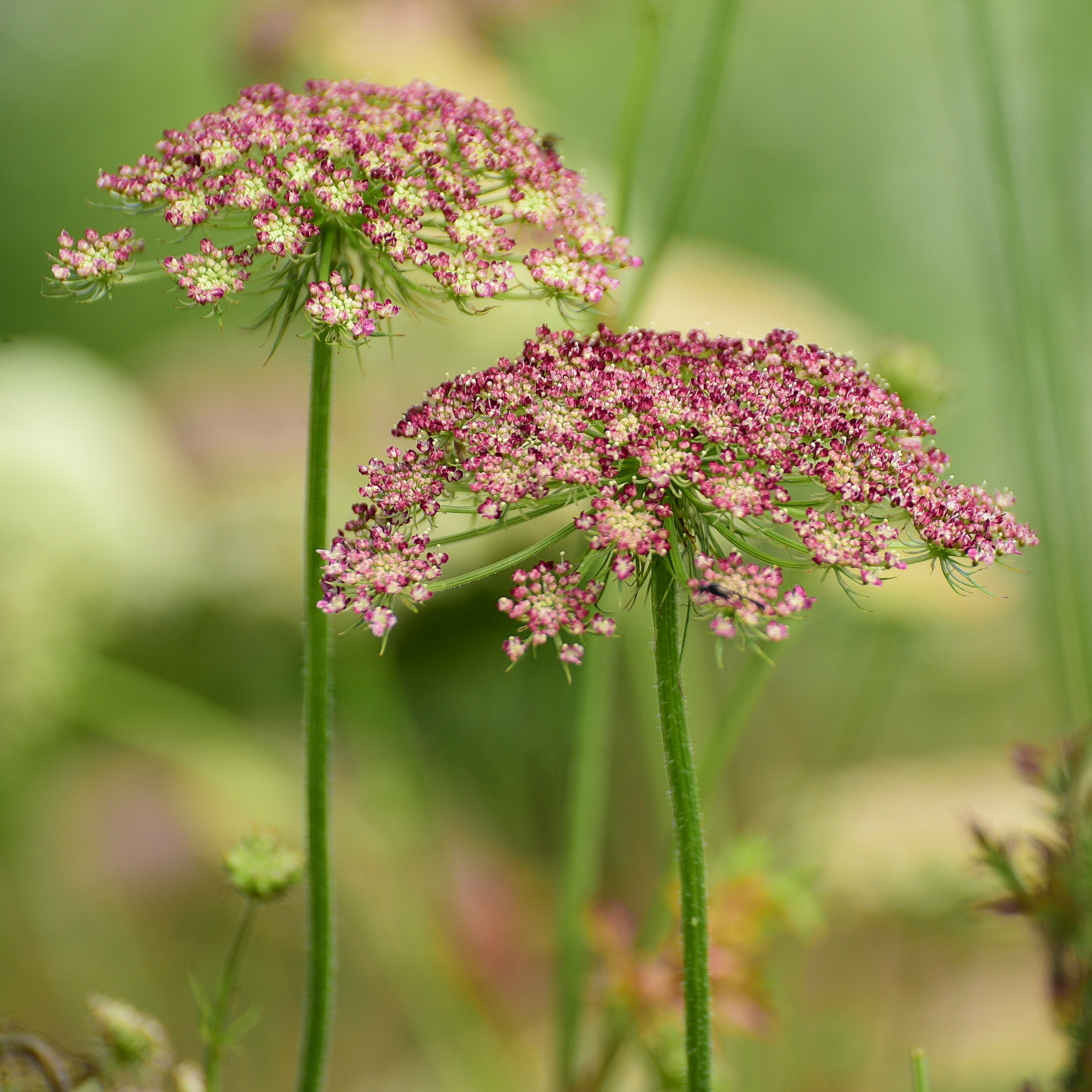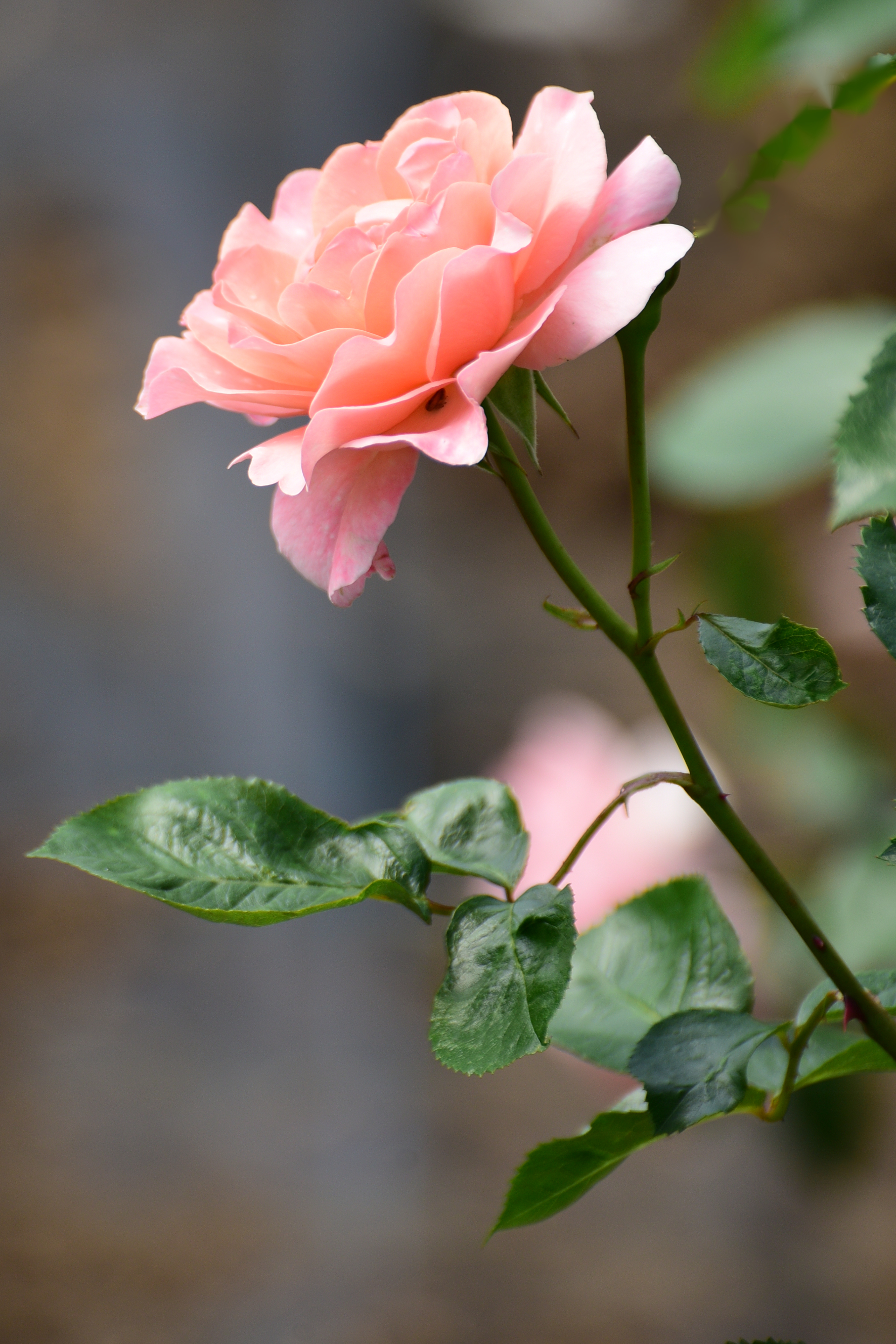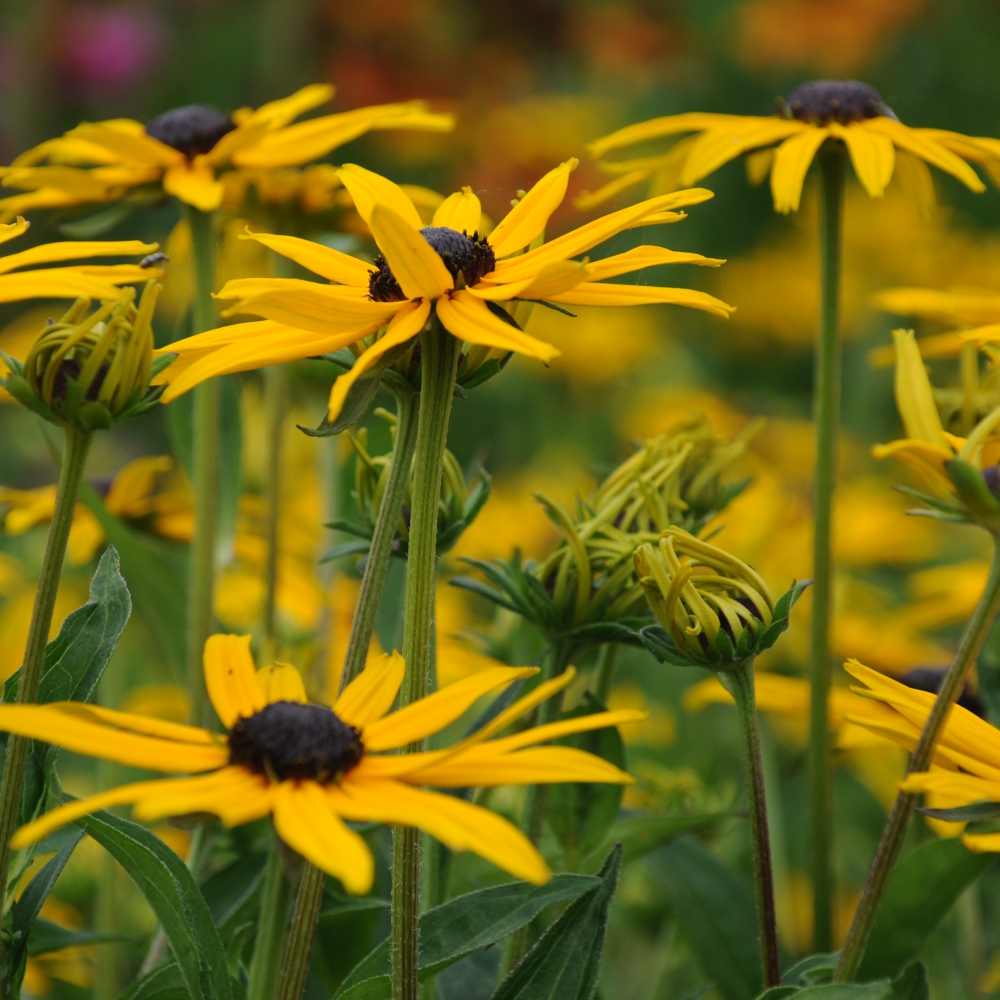Crocus time
when you come across a lawn of crocuses in their tricolour array of white, yellow and purple it can stop you in your tracks
I used to be a bit dismissive of crocuses, not really worth the effort I thought. But an amazing display in my local park last year changed my mind.
Snowdrops are exciting because there’s almost nothing else in flower at the time. But they’re white and you have to get down on your hands and knees to see them. Don’t get me wrong, I think it’s worth the effort, but when you come across a lawn of crocuses in their tricolour array of white, yellow and purple it can stop you in your tracks.
Crocus Pickwick
Crocuses are easy to grow. They don’t mind sun or a bit of shade, as long as the soil isn’t too wet in winter. They do well under deciduous trees as the have finished flowering by the time the trees have leafed-up. They also look good in grass and as they die back earlier than daffodils they don’t interrupt your mowing regime as much.
Crocus tommassianius Barr’s Purple
Although crocuses are very tolerant of the vagaries of British weather they will only open up in the sun. They are an early source of nectar and are magnets for bees on warm sunny days. And they can have a tendency to keel over in heavy rain.
Introduced to Britain by the Romans, the saffron crocus, Crocus sativus, was used as a dye. There are over 200 named varieties of crocus. Their taxonomy (classification) is complex and has changed many times since the Romans.
We are used to seeing crocus as small bright pops of colour in our gardens but some gardens showcase them in style by planting literally thousands (maybe hundreds of thousands). One of the most magnificent spectacles is at Ham House in London.
Ham House gardens
Ham House gardens
Even the most meticulous plans can experience the odd hiccup however.
Ham House gardens
If you haven’t got acres to show off your crocuses they look pretty good in pots, especially when combined with other early spring bulbs. I found all these at Sissinghurst just before the first lockdown.
Crocuses also come in yellow by the way, I just don’t seem to have many photos of them.
The cooler weather means crocuses will still be looking good for a couple of weeks yet. Some good places to see them:
Ham House - free with a National Trust card
Sissinghurst - also National Trust
Kew Gardens - naturally
Inkpen Crocus Field in Berkshire
Sussex Prairies
I first visited Sussex Prairies about ten years ago. It had only been open a couple of years then and on a dreary day late in October it had been hard to imagine how it would develop. However, I did remember the cakes had been rather good.
It’s safe to say things have turned out pretty well. If you are still in denial that summer has ended a couple of hours here would confirm your suspicions. Not only was it clear that most schools were still on holiday but I’m pretty sure the gardens were at their absolute peak.
The gardens are the work of Paul and Pauline McBride who have spent their whole careers developing gardens, mostly overseas. The gardens here are inspired by their experience of working with Piet Oudolf, champion of the “prairie” or “new perennial” style of planting.
The prairie reference relates the the north American origin of many of the plants used. (And hence, I suppose, is the reason for these buffalo wandering through.) The main features of this style of planting are the long season of interest, large groupings of the same plant in loose waves, a lot of ornamental grasses and few shrubs or evergreen structural plants.
And when I see it decribed like that the words don’t do it justice. Most of the flowers and grasses are tall, colourful, and with different forms. Walking through narrow paths in the middle of the planting is a really fantastic experience.
The borders are alive with pollinators and a couple of deep ponds provide habitats for other beneficial garden visitors. From memory I think the plants are left standing through the winter and are then strimmed and/or burned (another prairie feature?). The strimmed plants are chopped up and put back on the borders as mulch. Minimal inputs, minimal outputs.
The design of the borders is based on the spiral of a nautilus shell, not that it’s noticeable from the ground. At one end of the eight acre site the borders are raised up a few metres, giving good views across the gardens.
Although the planting emphasis is large groupings of single species it’s hard to keep nature completely under control. I found myself coming back to this small mix of dark mauve Eurybia x hervyi Twilight and the barley like grass Hordeum jubatum. For the purposes of clarity, Eurybia is the new name for most asters (don’t ask).
I also really liked the McBride’s house, just on the edge of the gardens. I think the living areas are on the first floor, imagine the views..
At the beginning of September it’s great to see which flowers are still going strong so late in the season. Here were have Heleniums and Solidago, and the other main ones are Persicaria, Echinacea, Rudbeckia, Sanguisorba, Gaura, Eupatorium, Hylotelephium (formerly Sedum), and of course most ornamental grasses.
The cake is still good. I had the guest cake - cherry, pistachio and coconut. The coffee is so-so. Bring a packed lunch if you visit though as there’s not too much else on offer.
You don’t need to book an entry time here and the garden’s so big social distancing is not a problem. The gardens are immaculate, unlike a National Trust one I visited recently, and it only cost £9 to get in. VFM.
Dahlia mania - the Exotic Garden at Wisley
On the wettest August day in a long time I thought it would be a good idea to visit RHS Wisley. How wet could it be I thought …
The Glasshouse Borders were looking windswept and the Long Borders were a little past their best but the Exotic Garden was still looking on top form.
The big leaves, bright colours and lushness of the Exotic Garden reminded me a little bit of Barbados. Even the rain added to the atmosphere. Here, the huge leaves of bananas and Cannas provide the jungly backdrop to the brightly coloured Canna flowers and the slightly more delicate and papery bells of orange Abutilon flowers.
Cannas are hungry plants and need to be well-fed and watered through the growing season. In milder areas you can keep them in the ground through winter. The flowers are pretty showy but it’s the leaves I really like. Often they are striped and multi-coloured.
The most recognisable highlights of the Exotic Garden though are the Dahlias. There were dozens of different varieties dotted around, however, very few of them were named - not very RHS I thought.
Many of you will know that Dahlias are enjoying a resurgence in popularity after years in the doldrums. Originating in Mexico they are relatively easy to grow in the UK if you follow a few simple rules. They make excellent flowers for cutting.
Dahlias prefer rich, free draining soils so if you’re gardening on heavy, unimproved clay you’ll need to lift them after the first frost. When planting new ones make sure it’s after the last frost of spring.
Many Dahlias have very large flowers and/or can reach heights of six feet. In these cases they’ll need staking - do it sooner rather than later.
Dahlias really benefit from regular feeding - you can use diluted tomato food twice a week. And dead-heading prolongs flowering.
The flowers come in lots of different colours and shapes. The National Dahlia Society has 14 different flower shape types (including miscellaneous). Generally, the simpler the shape the better the flower is for pollinators.
Dahlias can be prone to attacks from slugs and snails just as they are getting going and later from aphids and earwigs so keep an eye out for them.
Most people find them a delight to grow and their sheer exhuberance makes them the highlight of late summer and early autumn.
RHS Wisley is open every day and generally you have to book a timed entry. However, as the day I went was so wet many people had cancelled and I was able to get in without booking. I did call first to check though.
The shopping and catering facilities have increased vastly since my last visit (as has the size of the carpark - be prepared to walk upto a couple of hundred yards just to get to the entrance).
By the way, the rain stopped just before it closed, pretty wet then.
Readers' Gardens July 2020
Glenis
Glenis and I have been collaborating on her garden since she moved into the new build in south west London in 2008. Amazingly, it is completely walled. This Rosa Iceberg didn’t do very well in the first year and Glenis took some persuading to keep it for another year. But since then it has flowered prolifically and does a great job filling this corner.
Like many of my clients who have lived in hot countries Glenis likes lots of colour and so the subtle palette of blues and yellows that I started with have gradually got hotter and brighter. We don’t know the variety of these orange Alstromerias but with regular dead-heading they flower most of the summer.
Some of the blues remain though and these Campanula porscharskyana Stella carpet one of the borders.
Glenis is a big fan of planters and is assiduous in watering, feeding and dead-heading them. She has a small collection of these pretty wall-hung pots planted with pelargoniums, ideal for keeping busy in lock-down.
Inger and Peter
Inger and Peter have got a lovely large, private garden in Wimbledon. This is its fourth summer and has really filled out. It’s quite shady due to the large trees in the garden, many of which are protected. In summer though there is a lot of sun and this table and chairs are perfectly placed for a morning coffee.
In the second half of the summer these Hydrangea macrophylla Mme Emilie Moulliere are the stars of the garden. They start off a brilliant white and fade to a lovely pink by the end of summer.
Accompanying the hydrangeas are spots of pink and blue. These Geranium Mrs Kendall Clark have thrived in the rain this June.
A dining table, flanked by Olive trees and Erigeron karvinskianus, is handily placed between the kitchen and the orangery. You can see more of this garden here - https://www.arthurroadlandscapes.co.uk/designs#/wimbledon-common-garden/
My garden
A slight lack of planning means that I’ve run out of readers’ gardens and so have to resort to using my own. Like many people I’ve spent a lot more time in my garden than usual which means it does look a bit better than usual. The weather’s helped too.
As a garden designer I find my self being caught between the endless possibilities of what I could do, what I actually have the time and money to do, and finding homes for random plants that have proved surplus to requirements in clients’ gardens.
One end of the garden is my attempt at a white garden. It’s been fairly successful so far with some pale pink and pale yellow in it as well. At the other end is a mix of blue and white and yellow but I can’t decide if the purple blob of Berberis in the middle is a good thing or bad thing.
And just in case you were wondering about the shockingly long grass … it was an experiement to see what would happen if I didn’t mow it. The result? Very long grass (no wildflowers/weeds whatsoever) that my camera shy cat likes playing in.
Thank goodness most public gardens are now open.
Mottisfont Abbey Winter Garden
Review and photographs of Mottisfont NT Winter Garden design
Winter is not an obvious time to visit a garden, especially if it’s not even a nice frosty day. However, there are a smattering of winter gardens dotted around the country and Mottisfont in Hampshire is a notable example.
The Abbey was established in 1201 and made the most of it’s position on the pilgrimage route to Winchester, with travelers stopping off to marvel at the finger of St John the Baptist. Following the dissolution of the monasteries the abbey was not demolished but converted into a house.
The Winter Garden was established in 2010 and contains winter-flowering trees, shrubs, perennials and bulbs, many of which are highly scented.
Witch-hazels have the wierdest flowers, almost like strands of saffron. An unremarkable green-leaved shrub in summer, it is covered with these flowers ranging from pale yellow through to orange and a deep mahogany. They have a delicate citrussy scent and you need a still day to capture it.
It’s not just flowers that are brightly coloured, winter stems, bark and berries really come to the fore at this time of year. The standout features of the garden are the bright orange-yellow stems of Cornus sanguinea Midwinter Fire. This is another shrub that is pretty dull in summer but the bare stems, planted en masse, are really striking in winter. You need quite a bit of space to get this effect but it can be really worthwhile.
Many winter flowers like these Mahomia and winter honeysuckle, are attractive to pollinators, offering vital nectar on mild days when bees are flying.
The most fragrant shrub, and arguably the dullest to look at, is winter box or Sarcococcocca (I might have added too many cs and os…). It’s a shrub I use often in my garden designs as it is evergreen, has a neat habit, loves the shade and clay soil, and will stop you in your tracks on a winter’s day.
My parents tell me the walled rose garden here is pretty stunning in summer. At this time of year however, the other big attractions are the trees. There are some ancient mulberries and sweet chestnuts and a couple of absolutely enormous London Plane trees. One of these was planted in 1725 and measures more than 12m in girth. It’s not considered a “champion” tree as possibly it is two trees that have merged into one.
We only ventured into the house for coffee and cake. Surprisingly there was free cake, the chef was trying out some new recipes - the vegan hummingbird cake went down better than the salted caramel chocolate brownie - who’d have thought?
The gardens are open every day - https://www.nationaltrust.org.uk/mottisfont
Breathing new life into a Teddington garden
I’d been looking after N’s garden for a number of years and whilst it was looking ok both N and I agreed it could look a lot better. However, a major house refurbishment took priority and parts of the garden were used as a workshop by the builder. Eventually the work on the house was completed and N and I could focus on the garden.
This is a north-facing garden with quite a few trees so sunlight was in short supply. The lawn was in a sorry state and the borders needed restocking. The starting point was to remove this very mature weeping birch to allow more light in. It’s not something I was keen to do as I liked the shape and cutting down any tree needs to be considered carefully these days.
Most of the hard landscaping was fine, it just needed smartening up. Builder Marcin made some slatted trellis to go on top of the fences, both of which were painted black to disappear into the background. He also completely refurbished and painted the existing pergola, cleaned and oiled the deck and refurbished and painted the shed and clad it in the same trellis.
The lawn was reshaped with sweeping curves to lead the eye round the awkward corners. N wanted to keep the stepping stone path and Marcin had the great idea of putting it in the border rather than in the lawn. The lawn itself was given a lot of tlc with lots of water and feed and regular mowing - no need to rip it out and returf.
The garden was ready for some new plants - a pleached hornbeam was added to complement the existing ones and a row of pleached crab apples were added as a screen on another boundary. The crab apples will have spring blossom for pollinators and autumn fruits for birds.
The rest of the planting is a rich palette of purple, dark red, pink and white for the sunny areas and a quieter mix of white and pink for the shady parts. The stand out features here are a couple of elegant tree ferns.
In the sunniest part of the garden we added a shallow water bowl in corten steel. It’s a magnet for people and wildlife and the reflections change the views of the garden.
The lighting is nearly complete and an irrigation system has been installed. Of course, since then it’s hardly stopped raining.
It’s at this point I always want to fast-forward a couple of years to see the planting fill out. But to do that would mean missing out on the pleasure of seeing the garden develop, sometimes in unexpected ways.
See this garden a year further on https://www.arthurroadlandscapes.co.uk/designs#/teddington-flower-garden/
Marcin Builder - https://marcinbuilder.co.uk/
Corten water bowl - https://www.thepotco.com/shop/features/water-features/water-bowls/corten-steel-curved-water-bowl/
Pleached trees - https://www.kingsdown-uk.com/wholesale-plants/trees/pleached/
Perennials - https://www.northhillnurseries.co.uk/
Green & Gorgeous Flower Farm
I found out about Green & Gorgeous in a magazine and paid a visit on a Saturday late in June. It was a blisteringly hot and eyeball achingly bright day. Not ideal for photography but hey it was a bit of a trek to get there so I had to make the best of it.
On arrival I was sent off to the sweet pea borders. If ever there was proof that if you’re going to do sweet peas properly you’ve got to plant an awful lot of them then this was it. I could smell them before I could see them. Unfortunately my photos of the sweet peas weren’t very good but if you scratch your screen here you can smell them.
Although the main business here is growing flowers for cutting, particularly in summer in full wedding season, Green & Gorgeous is open on Saturdays for you to pick your own sweet peas and select just-picked stems and produce in the shop. Some perennials are also on sale.
I asked if they minded me taking photos and they didn’t so off I wandered. It was a very pleasant way to spend an hour or so, it was just a shame there wasn’t really anywhere to have coffee. Maybe there was but the poor lady in the shop was on her own and I didn’t have the heart to ask as she was pretty run off her feet.
As well as creating floral bouquets for events they also run courses on topics ranging from how to set up and run a flower farm business to flower arranging, and garden photography with Eva Nemeth.
The photography on their website is lovely and the Instagram feed is pretty impressive too. It was great to see a successful business selling local, seasonal produce that doesn’t have a huge carbon footprint.
For those of you desperate for a coffee or other refreshments there’s plenty on offer in nearby Wallingford or Goring & Streatley (if you can find somewhere to park).
Green & Gorgeous - https://www.greenandgorgeousflowers.co.uk
Did anyone scratch?
New Wimbledon planting project
E&S were having a bit of a nightmare with their garden. The removal of a Eucalyptus tree revealed a hotch potch of different height fences and exposed the garden to their neighbours’ gaze. Sorting the fence out resulted in the loss of a lot of established plants.
The fencing contractor made quite a mess which E&S’s gardener managed to resolve. And E’s first attempt to get some help from a garden designer ended in disappointment. This is how the garden looked when I first saw it. Not the worst starting point but I had quite a task on my hands to make up for all the frustrations of the previous year.
The garden had been very green and lush with none of the neighbour’s houses visible. E wanted to get this look again, but with more flowers and colour. The borders also needed reshaping to give a better structure to the garden.
The first thing that struck me was that the shed was in the wrong place. We moved it from the sunniest spot in the garden to a shadier corner, swapping places with a seating arbour. We also made the stepping stone path more of a feature and by using the same paving as elsewhere in the garden the overall look came together better.
The borders were reshaped from awkward corners and wiggly lines into sweeping curves. And then we selected a palette of plants from evergreens to shade-lovers to E’s favourite vibrant blues and yellows. It was all planted in October so E&S have had a nine month wait to see it all come to fruition.
This project proves that you don’t need a lot of hard landscaping to make a massive difference to a garden. It’s amazing what you can achieve by reshaping the lawn and investing in the right plants.
Thanks to the efforts of E and her gardeners the garden is looking immaculate in July. And it is by no means at its peak, there’s still Rudbeckia, Asters and Sedums to come later this summer. And by next year it will be looking even better.
The best long-flowering plants
At the height of summer some gardens are beginning to run out of steam. I'm always on the look-out for flowers that have staying power and these are some of my favourites.
Verbena bonariensis is one of the most requested plants by my clients, even if they don't know its name. It flowers on tall wiry stems from June until mid-autumn and will only lose its structure after a heavy frost. It doesn't live long but as any gardener will tell you Vb self sows with complete abandon, almost to the point of being really annoying. Give it lots of sun and almost any soil except really heavy clay. Vb's little brother Verbena lollipop grows well in a pot if you're strapped for space.
Looks good with Echinacea purpurea, Helenium Waldtraut and Calamagrostis x acutiflora Karl Foerster.
Anthemis tinctoria starts a bit earlier in the year. Most, like A.t. Sauce Hollandaise or EC Buxton, prefer light and free draining soils and should be cut back hard after flowering. They make good cut flowers if you can bear to take them out of the garden.
Looks good with Geranium Rozanne, Knautia macedonica and Verbascum chaixii.
One of the stars of the late summer garden Aster x frikartii Monch starts flowering in July and will go ontil mid-autumn. Loved by insects, this plant likes fertile soil with some moisture to produce its best efforts although it will survive most conditions.
Looks good with Euphorbia characais Humpty Dumpty, Penstemon Alice Hindley and Rudbeckia fulgida var, sullivantii Goldsturm.
Penstemon Garnet is my go-to plant for a reliable red flower that doesn't get powdery mildew and lasts more than one summer. Like many plants in this list it likes full sun and fertile soil. I've had some disasters with heavy clay soil. It is not 100% frost-proof so whilst I dead-head it through the summer I don't cut it back fully until early spring. Confusingly this is also callled Penstemon Andenken an Friedrich Hahn and you will often see both names on the label. Most Penstemons are equally long-flowering and other favourites of mine include the deep purple P. Raven and the light blue P. Alice Hindley.
Looks good with Centranthus ruber Alba, Pennisetum Red Buttons and Salvia sylvestris Dear Anja.
Another great red flower, Potentilla Gibson's Scarlet is at the fire-engine end of the spectrum. It's great for the front of the border but give it plenty of room as the flower stems reach out further than you would think if planting early in the year. Full sun and well-drained soil will keep the plant happy.
Looks good with Geum Princess Julian, Agapanthus Black Pantha and Gaura lindheimeri Siskyou Pink.
If you can only have one of these plants in your garden this is the one I'd go for. Rudbeckia fulgida var. sullivantii Goldsturm flowers from July until late autumn and continue to look good through the winter if the weather is not too wet and windy. And, even better, it loves heavy clay soils, perfect for London.
Looks good with Helenium Moerheim Beauty, Verbena bonariensis and Phormium Yellow Wave.
Rosa Iceberg can be grown as a shrub but as it is pretty vigorous I think it's better as a climber. It produces a magnificent flush in June and if you dead-head properly it will continue to flower on and off until December. It doesn't have a strong scent but is usually pretty healthy. Like most roses is is as happy as Larry in clay soil.
Looks good on its own.
Winner of the RHS Flower of the Decade competition Geranium Rozanne doesn't really get into its stride for a month after most of the other blue Geraniums like G. Orion or G. Johnson's Blue. But once it does get going there is no stopping it, most I know go on until November and they don't need dead-heading. It will even grow in quite a bit of shade but for the best results plant in full sun in almost any soil except that which is waterlogged.
Looks good with Persicaria amplexicaulis Firetail, Phlomis russeliana and Salvia nemoraosa Caradonna.
The poster flower for the millenial trend of prairie planting Echinacea purpurea will probably outlast many others that don't like the general dampness of our climate. Strikingly architectural, even after the colour has faded, they are a favourite of gardeners and pollinating insects alike. It can take a few years to bulk up so it's not a plant to be impatient with. It likes full sun and well-drained but not dry soil - not picky at all - but worth it. This one is E.p. Magnus Superior but there are many different varieties and colours. I've not had much luck with the orange ones but E.p. White Swan is a reliable and good-looking culltivar.
Looks good with Gaura lindheimeri Whirling Butterflies, Sedum spectabile Autumn Joy and Calamagrostis brachytricha.
And finally, Erigeron karvinskianus, sometimes called E.k. Profusion or Mexican Fleabane. This is the plant you will see self-sown in the paving at National Trust properties. It flowers ceaselessly from May until November and does not need dead-heading; the newly emergent flowers are white, fading to pink as they age. It's great at the front of the border, keeping weeds at bay with its carpeting growth, and I like to plant it in pots. It's fairly unfussy about the conditions it grows in making really good value for money and it's self-sowing habit means it's quite difficult to kill!
Looks good with Olea europea, Stipa tenuissima and Sisyrinchium striatum.




























